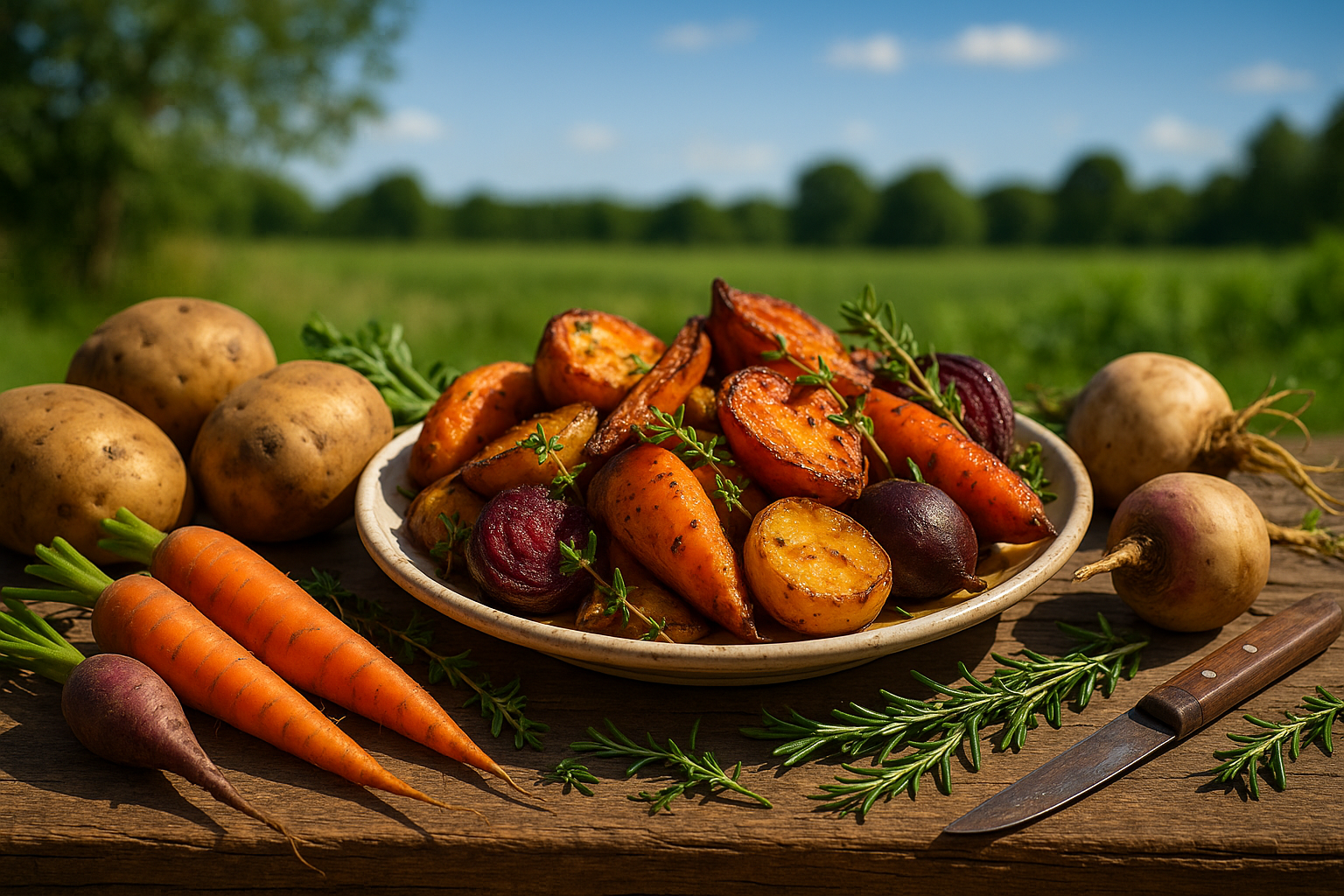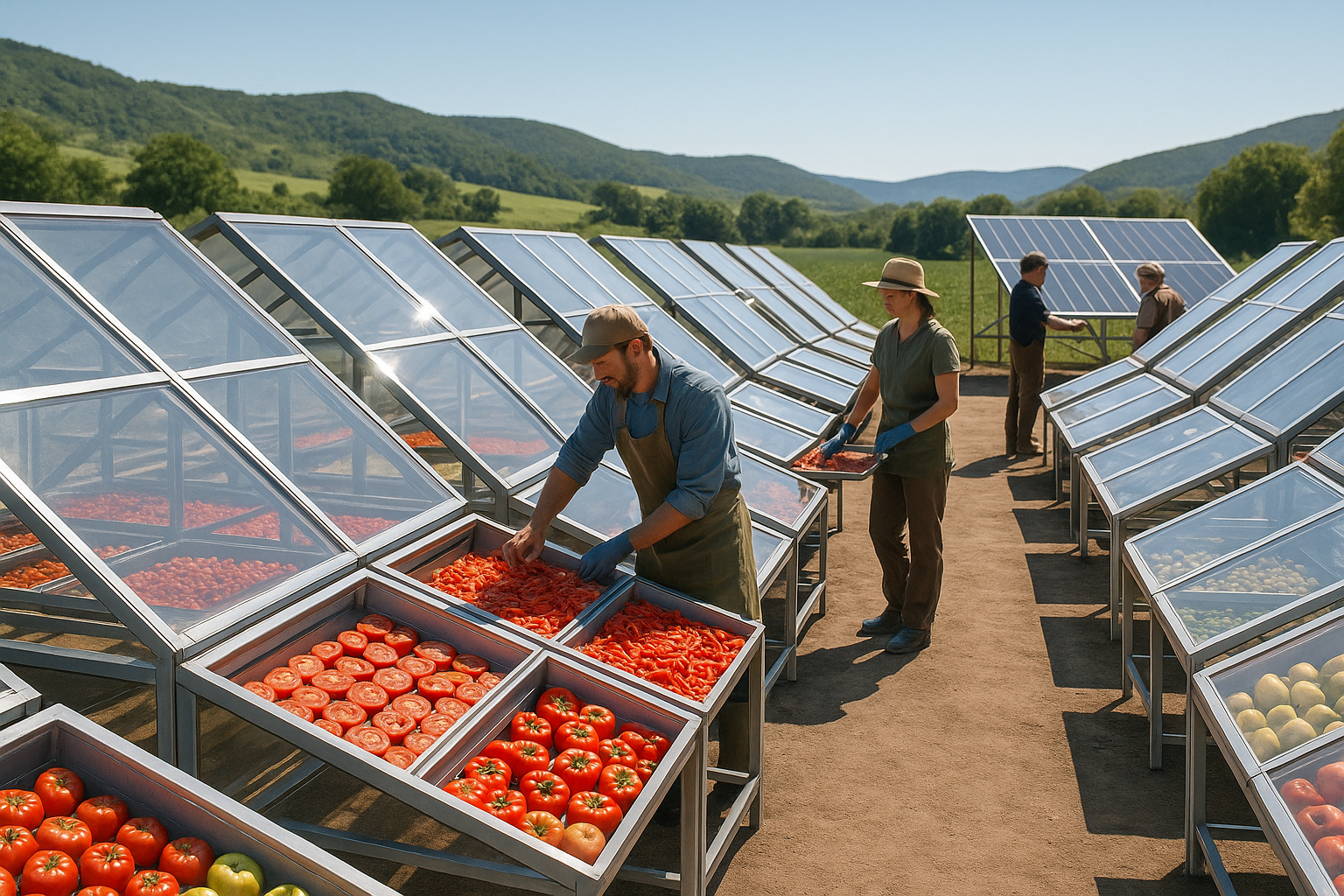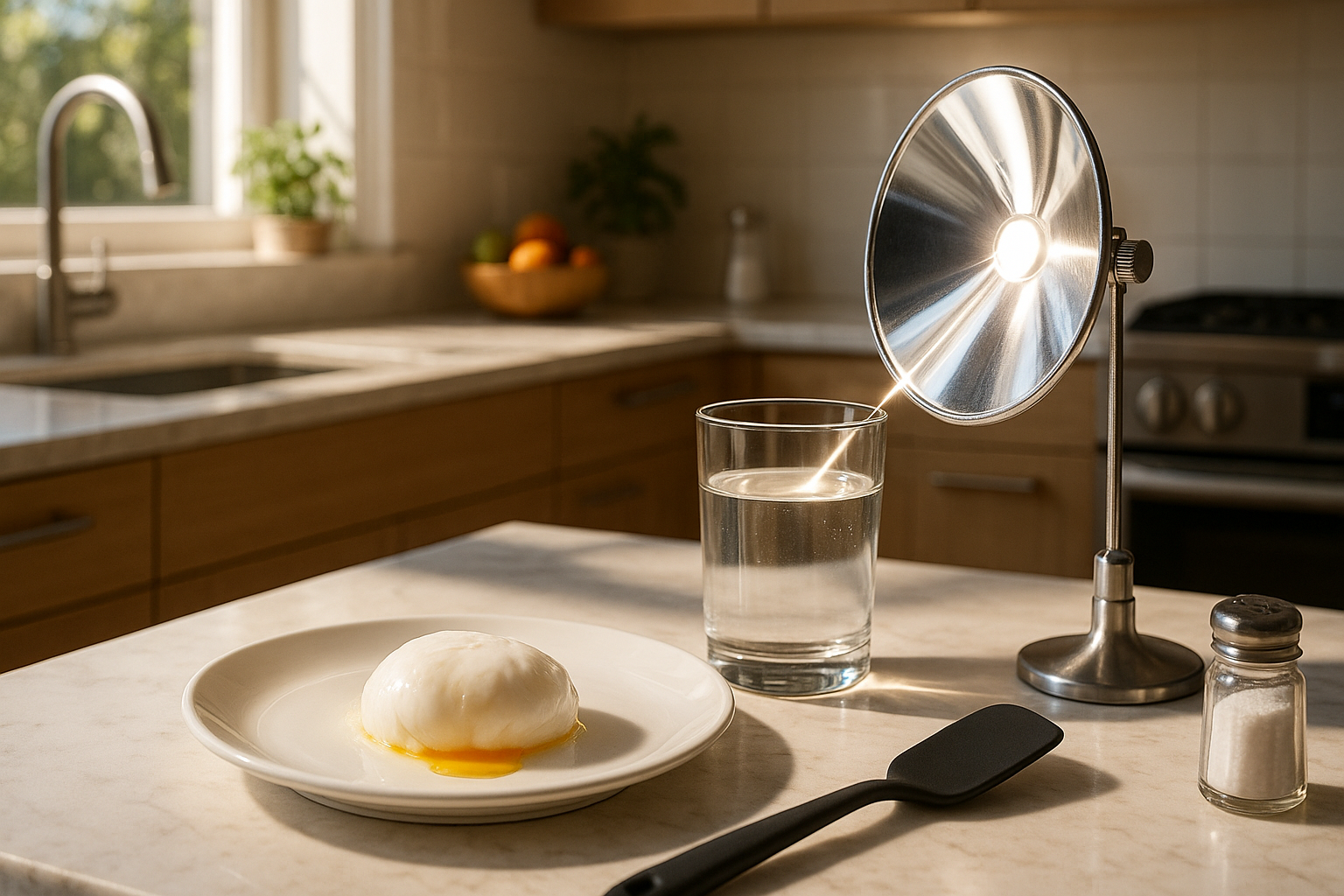In a world increasingly concerned with sustainability and mindful consumption, the art of solar baking emerges as a beacon of eco-friendly innovation. Imagine savoring a dish that not only tantalizes your taste buds but also comes with the satisfaction of knowing it was cooked using nothing but the power of the sun ☀️. Welcome to the sun-kissed world of solar baked root crops, where tradition meets technology to create a culinary experience that’s as delightful as it is environmentally conscious.
Root vegetables, with their earthy flavors and robust textures, have been a staple in human diets for centuries. They offer a nutritional powerhouse of vitamins, minerals, and fibers that are essential for a balanced diet. But what happens when these humble veggies are transformed by the gentle touch of solar energy? The result is a rich tapestry of flavors that is both unexpected and delightful, a true testament to nature’s bounty.
The process of solar baking involves harnessing the sun’s rays to cook food in solar ovens. These ingenious devices use reflective surfaces to concentrate sunlight, creating temperatures high enough to bake, roast, and even dehydrate. By eliminating the need for conventional fuel sources, solar baking reduces carbon footprints and promotes a cleaner, greener planet 🌍. It’s a method that not only respects the environment but also enhances the natural flavors of root crops, making each bite a sun-infused delight.
Throughout this article, we will explore the fascinating journey of solar baked root crops. We’ll delve into the science behind solar cooking, unraveling how it works and why it’s beneficial both for us and for the planet. You’ll discover a variety of root vegetables that lend themselves beautifully to this method, each bringing its own unique taste and nutritional profile to the table.
Expect to learn about the top root crops perfect for solar baking, such as sweet potatoes, beets, carrots, and parsnips. We’ll discuss their individual health benefits, offering insights into how solar baking can enhance these attributes. For instance, did you know that solar-baked sweet potatoes can intensify their natural sweetness, creating a caramel-like flavor that is simply irresistible?
Moreover, we’ll share practical tips on how to get started with solar baking at home. From choosing the right solar oven to prepping your veggies for maximum flavor, our guide will equip you with everything you need to embark on your solar cooking journey. We’ll even include some delicious recipes to inspire your culinary creativity, ensuring that you can bring the sun’s warmth to your table in the most delicious way possible 🍽️.
But the benefits of solar baking extend beyond taste and sustainability. We’ll also explore its economic advantages, particularly for communities in remote areas where access to electricity or gas might be limited. By utilizing the sun, solar baking provides an affordable, accessible cooking solution that empowers communities and fosters self-sufficiency.
In addition, solar baking offers a unique opportunity to reconnect with nature. In our fast-paced, technology-driven world, taking the time to cook with the sun encourages mindfulness and patience, reminding us of the simple joys of life. It is a practice that invites you to slow down, savor each moment, and appreciate the beauty of cooking in harmony with the environment.
As we journey through the sunlit pathways of solar baked root crops, you’ll find yourself inspired by the endless possibilities this sustainable cooking method offers. Whether you’re a seasoned chef looking to experiment with new techniques or a sustainability enthusiast eager to reduce your carbon footprint, solar baking opens up a world of delicious and environmentally friendly options. So, get ready to dive into a culinary adventure where the sun is your chef, and every dish is a testament to the delicious possibilities of solar energy.

Conclusion
In wrapping up our exploration of the sun-kissed goodness of solar-baked root crops, it’s evident that this sustainable cooking method not only enriches our culinary experiences but also contributes significantly to environmental conservation 🌱. Throughout our journey, we’ve delved into the myriad benefits of utilizing solar energy to cook delicious and nutritious meals, emphasizing the role it plays in reducing our carbon footprint and promoting a greener planet.
We began by examining the basic principles of solar cooking, highlighting how harnessing the sun’s energy can transform simple root crops like potatoes, sweet potatoes, and carrots into gourmet delights. This method not only preserves the natural flavors and nutrients of these crops but also offers a cost-effective and eco-friendly alternative to conventional cooking methods.
The versatility of solar cooking was another key point, demonstrating its adaptability across various climates and settings. Whether you’re in a bustling urban environment or a remote rural area, solar cooking can be a practical solution. We also explored some mouth-watering recipes that showcase the unique flavors and textures achieved through this method, encouraging readers to experiment and create their own culinary masterpieces.
Moreover, the discussion highlighted the broader implications of solar cooking in promoting food security and empowering communities. By reducing reliance on traditional fuels, solar cooking offers a pathway to energy independence and resilience, particularly in regions where access to electricity is limited.
In light of these insights, the importance of embracing solar cooking becomes undeniable. As we face increasing environmental challenges, shifting towards sustainable practices like solar cooking can make a significant difference. It’s a simple yet powerful step towards a more sustainable future for our planet and for future generations 🌍.
We invite you to take action by trying out solar cooking in your own kitchen, sharing your experiences, and spreading the word about this innovative method. Your engagement can inspire others to make the shift towards more sustainable living.
For further exploration, you can check out resources on solar cooking and sustainable living at Solar Cookers International and Greenpeace.
We hope this journey into the world of solar-baked root crops has been as enlightening and inspiring for you as it has been for us. Let’s continue to explore, innovate, and share our knowledge, building a community committed to sustainability and delicious, sun-kissed meals. Feel free to leave your comments below, and don’t forget to share this article with friends and family who might be interested in exploring the delightful world of solar cooking 🌞.
This conclusion captures the essence of your article, reinforcing the benefits and encouraging readers to engage and share their experiences.
Toni Santos is a practical visual researcher and culinary historian dedicated to the art and science of survivalist cooking. Through a hands-on and detailed lens, Toni explores traditional and improvised food preparation techniques designed for resilience in extreme and resource-scarce environments. His journey is rooted in a fascination with how humans have adapted their cooking methods to survive—and thrive—in the wild, during crises, and off the grid. From open-fire smoking to solar ovens and fermentation in makeshift containers, Toni’s work uncovers time-tested strategies that transform simple ingredients into vital nourishment. With a background in ethnography and applied survival skills, Toni documents the tools, recipes, and rituals that sustain body and spirit when convenience disappears. His research connects ancient wisdom with modern survivalist innovations, highlighting the interplay of resourcefulness, nutrition, and cultural knowledge. As the creative mind behind Vizovex, Toni shares step-by-step guides, visual tutorials, and thoughtful articles that empower readers to master cooking techniques essential for preparedness, self-reliance, and outdoor living. His work is a tribute to: The ingenuity behind emergency and off-grid cooking The cultural heritage of survival food traditions The art of transforming basic resources into life-sustaining meals Whether you’re a prepper, an outdoor enthusiast, or simply curious about food’s role in survival, Toni welcomes you to explore a world where every flame, tool, and ingredient tells a story of endurance and care.




